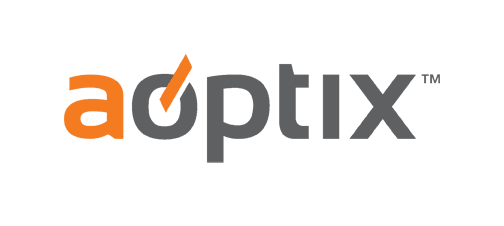AOptix solutions provide ultra-high-capacity wireless communications through the use of laser-radio technology, which the company invented. LRT integrates free space optics with millimeter wave radio frequency technology, allowing for carrier-grade performance with 2Gbps throughput capacity to be supported for up to 10 kilometers.
Initially developed and deployed in defense scenarios for 10 years, AOptix is now bringing this technology to the telecommunications market to provide more options for solving mobile backhaul congestion. The technology is currently deployed in seven countries across four continents primarily for capacity overflow. In addition to mobile backhaul congestion offload, deployment scenarios can also support fiber path diversity and core extension.
 What’s different about this solution is that it combines two technologies – free space optics and millimeter wave radio frequency. All wireless technologies travel through the air and, unfortunately, weather can interfere with their performance. Each of these technologies has its own weather challenges. FSO is light-based and therefore impacted at foggy times, whereas millimeter wave is susceptible to rain fade. The Intellimax solution combines both technologies to provide more consistent performance during diverse weather conditions by transmitting redundant data streams on diverse wavelengths. The performance is fiber-like without the cost of fiber. Based on statistics provided by AOptix for the U.S. market; the return on investment on deployment of Intellimax vs. fiber is 9-12 months. When considering that about 50% of towers are located in places where fiber is not an option, there’s a great deal of need for alternative solutions. Two more reasons to consider such an alternative are that it is deployable on any type of tower and the links can be aligned in less than 20 minutes.
What’s different about this solution is that it combines two technologies – free space optics and millimeter wave radio frequency. All wireless technologies travel through the air and, unfortunately, weather can interfere with their performance. Each of these technologies has its own weather challenges. FSO is light-based and therefore impacted at foggy times, whereas millimeter wave is susceptible to rain fade. The Intellimax solution combines both technologies to provide more consistent performance during diverse weather conditions by transmitting redundant data streams on diverse wavelengths. The performance is fiber-like without the cost of fiber. Based on statistics provided by AOptix for the U.S. market; the return on investment on deployment of Intellimax vs. fiber is 9-12 months. When considering that about 50% of towers are located in places where fiber is not an option, there’s a great deal of need for alternative solutions. Two more reasons to consider such an alternative are that it is deployable on any type of tower and the links can be aligned in less than 20 minutes.
Lagos is the landing point for four major submarine fiber-optic cables – SAT-3/WASC/SAFE, ACE, GLO-1 and Main One connecting Nigeria to Europe. The problem is that not enough network infrastructure exists in the region to transport the optical bandwidth. And many of the microwave links used in Africa are outdated and don’t provide enough capacity and reliability.
WaveTek Nigeria Limited has partnered with AOptix to deploy its technology to meet network backhaul requirements. WaveTek utilizes EBand 70/80 GHz solutions to provide connectivity and cloud services. A seven-kilometer link was deployed and field validated to connect the submarine fiber optic cables to a distribution point in the center of the city. Laser-radio technology is then utilized to enable local mobile carriers to offer services linking local users to the world outside of Nigeria.
As more emerging markets and rural locations begin the migration to 4G/LTE services, options for backhaul other than fiber will be a requirement to justify the costs of these upgrades. 4G/LTE services are required to achieve the goals for connected cities/towns, homes, businesses and cars. And it’s always good to have more options.
Like what you read? Follow me on twitter!
Claudia Bacco, Managing Director – EMEA for RCR Wireless News, has spent her entire career in telecom, IT and security. Having experience as an operator, software and hardware vendor and as a well-known industry analyst, she has many opinions on the market. She’ll be sharing those opinions along with ongoing trend analysis for RCR Wireless News.

